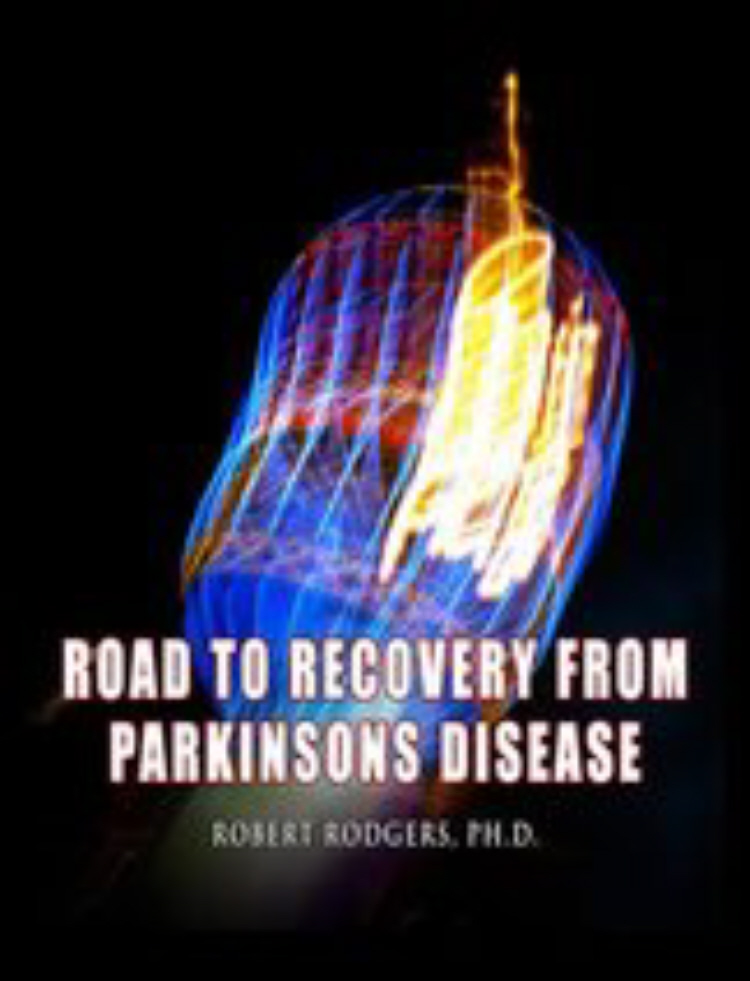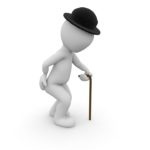I have known for several years now that there is a strong connection between diabetes and Parkinsons. I suspect however you are thinking this is not my problem. This is the response I hear from most people.
My agenda with this class is first to convince you there is a strong and compelling association of neurological symptoms and diabetes and second to offer some ways to address the problem.
Below I list the symptoms associated with Type 2 Diabetes. All of them have been reported to me by persons diagnosed with Parkinsons, Alzheimers or dementia since 2004.
Symptoms of Type 2 Diabetes
Do you experience any of the symptoms listed below associated with Type 2 diabetes?
- Frequent urge to pee. High blood sugar levels cause excessive urination
- Excessive thirst
- Unexplained weight loss (the body uses glucose for energy rather than fat)
- Fatigue due to high blood sugar levels
- Wounds that are slow to heal. High blood sugar levels impair the body’s immune system
- Chronic Infections
- Numbness or tingling in hands and feet due to high blood sugar levels
- Frequent yeast infections (candida)
- Fatty liver disease
Regulation of Blood Sugar Levels
Insulin is a hormone produced by the pancreas that plays a crucial role in regulating blood sugar levels.
Functions of Insulin:
- Facilitates glucose uptake: Insulin binds to receptors on cells, allowing glucose (sugar) from the bloodstream to enter the cells and used for energy.
- Lowers blood sugar levels: By promoting glucose uptake, insulin helps reduce blood sugar levels after meals.
With Type 2 Diabetes, insulin resistance compromises the ability of the body to convert sugar into glucose.
In the website listed below. Dr. Ben Bikman argues insulin intolerance is involved with all chronic illnesses including Parkinsons and Alzheimers.
https://www.youtube.com/@benbikman
The following article discusses using GLP-1 receptor agonists as a potential treatment for Parkinsons. These are medications used to treat type 2 diabetes and, increasingly, for weight management in individuals with obesity. They mimic the action of the naturally occurring hormone GLP-1, which helps regulate blood sugar levels.
https://pmc.ncbi.nlm.nih.gov/articles/PMC11011817
Unresolved Emotions Associated with Diabetes and Neurological Challenges:
- A great need to control.
- Hopelessness and helplessness
- Deep sorrow.
- No sweetness left in life.
There are always unresolved emotions associated with chronic diseases which have to be acknowledged and cleared before resolution is possible. The key questions to ask yourself that beg to be answered are:
Why am I experiencing troublesome neurological symptoms?
What is the life lesson I must learn from this suffering before recovery becomes a reality?
What do I not want to remember?
Meditate on answers to these questions by acknowledging unresolved feelings that are calling out to be released now and forever more.
Diabetes and Parkinsons Recommendations
My research over the past 20 years reveals a majority of persons with Parkinsons symptoms or dementia have a pre-diabetic condition which is unacknowledged. If diabetes happens to be a challenge for you, what can you do about it?
First, because this is an emerging stream of research, most clinicians will be unaware of the research as they are not researchers. You may get a referral to a endocrinologist from your neurologist, but the chances of such a referral are slim.
Second, there is actually little evidence that prescription medications for diabetes will help address the problem and offer in turn relief from Parkinson symptoms, though that of course is a possibility.
Third, I recommend a dietary solution which admittedly is difficult for most people to do. My question for you to ponder is: Do you want to get well? If so, you will have to make huge adjustments to your diet.
- Eat no processed or packaged foods – all of which contain sugars of one description or another.
- No juices which are high in sugars.
- Eat only non-starchy vegetables like leafy greens, broccoli, and peppers by steaming them or juicing them.
- Eat fish and meat. With meat, eat only the equivalent size of a deck of cards. You need protein, but large amounts convert to sugars.
- Eat small amounts more frequently.
Fourth, there is a supplement I take on a regular basis to address my own pre-diabetic condition which works really well: Glucose Tolerance II with Glucevia from Allergy Research Group.
Below I post a selected body of studies published in 2025 that identifies the role of Type 2 diabetes in creating and sustaining neurological symptoms. The evidence is compelling. Study abstracts listed below represent a small portion of the research on diabetes and neurological conditions published in 2025.
Critical point: Reduce dependence on glucose to fuel your brain and celebrate neurological symptom relief.
Abstracts of Studies that Report on the Relationship between Diabetes and Parkinsons
Int J Mol Sci . 2025 Jan 10;26(2):542.Associations Between Diabetes Mellitus and Neurodegenerative Diseases
Abstract
Diabetes mellitus (DM) and neurodegenerative diseases/disturbances are worldwide health problems. The most common chronic conditions diagnosed in persons 60 years and older are type 2 diabetes mellitus (T2DM) and cognitive impairment.
It was found that diabetes mellitus is a major risk for cognitive decline, dementia, Parkinson’s disease (PD), Alzheimer’s disease (AD), Huntington’s disease (HD), amyotrophic lateral sclerosis (ALS) and other neurodegenerative disorders.
An impaired intracellular insulin signaling pathway, together with hyperglycemia and hyperinsulinemia, may cause pathological changes, such as dysfunction of the mitochondria and oxidative stress inflammatory responses.
******
J Parkinsons Dis. 2020;10(3):775-789. The Association Between Type 2 Diabetes Mellitus and Parkinson’s Disease
Abstract
In recent years, an emerging body of evidence has forged links between Parkinson’s disease (PD) and type 2 diabetes mellitus (T2DM). In observational studies, those with T2DM appear to be at increased risk of developing PD, as well as experiencing faster progression and a more severe phenotype of PD, with the effects being potentially mediated by several common cellular pathways.
The insulin signalling pathway, for example, may be responsible for neurodegeneration via insulin dysregulation, aggregation of amyloids, neuroinflammation, mitochondrial dysfunction and altered synaptic plasticity.
******
Brain. 2025 Apr 3;148(4):1389-1404. Machine learning reveals connections between preclinical type 2 diabetes subtypes and brain health
Abstract
Previous research has established type 2 diabetes mellitus as a significant risk factor for various disorders, adversely impacting human health. While evidence increasingly links type 2 diabetes to cognitive impairment and brain disorders, understanding the causal effects of its preclinical stage on brain health is yet to be fully known.
We employed a robust machine learning algorithm with cross-sectional clinical data to identify underlying subtypes and stages for preclinical type 2 diabetes. Our analysis revealed one subtype distinguished by elevated circulating leptin levels and decreased leptin receptor levels, coupled with increased body mass index, diminished lipid metabolism, and heightened susceptibility to psychiatric conditions such as anxiety disorder, depression disorder, and bipolar disorder.
Individuals in the second subtype manifested typical abnormalities in glucose metabolism, including rising glucose and haemoglobin levels, with observed correlations with neurodegenerative disorders. A 10 year follow-up of these individuals revealed differential declines in brain health and significant clinical outcome disparities between subtypes. The first subtype exhibited faster progression and higher risk for psychiatric conditions, while the second subtype was associated with more severe progression of Alzheimer’s disease and Parkinson’s disease and faster progression to type 2 diabetes. Our findings highlight that monitoring and addressing the brain health needs of individuals in the preclinical stage of type 2 diabetes is imperative.
******
J Ethnopharmacol. 2025 Feb 10;338(Pt 3):119095. Exploring the therapeutic potential of Chinese herbs on comorbid type 2 diabetes mellitus and Parkinson’s disease: A mechanistic study
Abstract
Type 2 diabetes mellitus (T2DM) and Parkinson’s disease (PD) are chronic conditions that affect the aging population, with increasing prevalence globally. The rising prevalence of comorbidity between these conditions, driven by demographic shifts, severely impacts the quality of life of patients, posing a significant burden on healthcare resources.
Chinese herbal medicine has been used to treat T2DM and PD for millennia. Pharmacological studies have demonstrated that medicinal herbs effectively lower blood glucose levels and exert neuro-protective effects, suggesting their potential as adjunctive therapy for concurrent management of T2DM and PD.
Aim of the study:
To elucidate the shared mechanisms underlying T2DM and PD, particularly focusing on the potential mechanisms by which medicinal herbs (including herbal formulas, single herbs, and active compounds) may treat these diseases, to provide valuable insights for developing therapeutics targeting comorbid T2DM and PD.
Materials and methods:
Studies exploring the mechanisms underlying T2DM and PD, as well as the treatment of these conditions with medicinal herbs, were extracted from several electronic databases
Results:
Numerous studies have shown that inflammation, oxidative stress, insulin resistance, impaired autophagy, gut microbiota dysbiosis, and ferroptosis are shared mechanisms underlying T2DM and PD. Thirty-four medicinal herbs, including 2 herbal formulas, 4 single herbs, and 28 active compounds, have been reported to potentially exert anti-T2DM and anti-PD effects by targeting these shared mechanisms.
Conclusions: Traditional Chinese medicine effectively combats T2DM and PD through shared pathological mechanisms, highlighting their potential for application in treating these comorbidity conditions.
******
Int J Mol Sci. 2025 Feb 11;26(4):1516. Targeting Ferroptosis in Parkinson’s: Repurposing Diabetes Drugs as a Promising Treatment
Abstract
This review explores the promising potential of repurposing type 2 diabetes (T2D) medications for the treatment of Parkinson’s disease (PD), highlighting the shared pathophysiological mechanisms between these two age-related conditions, such as oxidative stress, mitochondrial dysfunction, and ferroptosis. The overlap suggests that existing diabetes drugs could target the common pathways involved in both conditions.
The connection between ferroptosis and existing treatments, including diabetes medication, are only beginning to be explored. The limited data can be attributed also to the complexity of mechanisms involved in ferroptosis and Parkinson’s disease and to the fact that the specific role of ferroptosis in Parkinson’s disease pathogenesis has not been a primary focus until recent. Despite the promising preclinical evidence, clinical findings are mixed, underscoring the need for further research to elucidate these drugs’ roles in neurodegeneration.
Repurposing existing diabetes medications that have well-established safety profiles for Parkinson’s disease treatment could significantly reduce the time and cost associated with drug development and could offer a more comprehensive approach to managing Parkinson’s disease compared to treatments targeting a single mechanism.
******
Mov Disord. 2025 Jan;40(1):67-76. Insulin Resistance Is a Modifying Factor for Parkinson’s Disease
Abstract
Background:
Parkinson’s disease (PD) is the second most common, and the fastest-growing neurodegenerative disorder with unclear etiology in most cases. An increasing number of evidence suggests that central insulin resistance might have an essential role in PD pathology. Nevertheless, it is not clear whether insulin resistance arises from external factors/lifestyle, comorbidities such as type 2 diabetes or it can occur in a PD patient’s brain independently from peripheral insulin resistance.
Objective: We aimed to investigate insulin resistance and its role in GBA1 mutation-associated PD pathogenesis and phenotype severity.
Methods: Midbrain organoids, generated from induced pluripotent stem cells Of PD patients carrying the GBA1-N370S heterozygous mutation (GBA-PD) and healthy donors, were exposed to different insulin concentrations to modify insulin signaling function. Transcriptomics analysis was performed to explore insulin signaling gene expression patterns in GBA-PD and to find a potential target for GBA-PD-associated phenotype rescue.
Results: The insulin signaling pathway genes show dysregulation in GBA-PD. Particularly, we highlight that a knockdown of FOXO1 mitigates the loss of dopaminergic neurons and cellular death in GBA-PD. Additionally, our findings suggest a promising therapeutic potential of the anti-diabetic drug Pioglitazone in decreasing dopaminergic neuron loss associated with GBA-PD.
Conclusion: Local insulin signaling dysfunction plays a substantial role in GBA-PD pathogenesis, exacerbating dopaminergic neuron death.
******
Arq Neuropsiquiatr. 2025 Mar;83(3):1-10 Modifiable risk factors associated with the risk of developing Parkinson’s disease: a critical review
Abstract
The etiology of Parkinson’s disease (PD) is complex and multifactorial, depending on interactions involving environmental/lifestyle and genetic factors. The genetic aspects of the disease are becoming well characterized, while the environmental factors still need further investigation.
In the present narrative review, we have described the most concrete evidence of associations between environmental factors and the risk of developing PD.
- Physical activity, healthy dietary patterns, smoking, and caffeine intake are protective factors against PD.
- Head trauma, consumption of milk and dairy products, and pesticide exposure were associated with a higher risk of developing PD.
Several studies strongly suggest that diabetes mellitus is a risk factor for the development of PD, as well as the pre-diabetic state. Lower serum levels of uric acid were associated with an increased risk of developing PD and with worse clinical features and faster progression of symptoms.
Several other factors were potentially associated with the risk of developing PD: environmental pollutants such as organic solvents, exposure to sunlight, vitamin D deficiency, bullous pemphigoid, bipolar disorder, inflammatory bowel disease, irritable bowel syndrome, certain infections and agents, and essential tremor. Environmental factors are important risk markers for the development of PD.
******
Neural Regen Res. 2025 Nov 1;20(11):3113-3123. Understanding the link between type 2 diabetes mellitus and Parkinson’s disease: role of brain insulin resistance
Abstract
Type 2 diabetes mellitus and Parkinson’s disease are chronic diseases linked to a growing pandemic that affects older adults and causes significant socio-economic burden. Epidemiological data supporting a close relationship between these two aging-related diseases have resulted in the investigation of shared pathophysiological molecular mechanisms.
Impaired insulin signaling in the brain has gained increasing attention during the last decade and has been suggested to contribute to the development of Parkinson’s disease through the dysregulation of several pathological processes. The contribution of type 2 diabetes mellitus and insulin resistance in neurodegeneration in Parkinson’s disease, with emphasis on brain insulin resistance, is extensively discussed in this article.
******
Pharmaceuticals (Basel). 2025 Mar 28;18(4):486. Overview of Metformin and Neurodegeneration: A Comprehensive Review
Abstract
This comprehensive review examines the therapeutic potential of metformin, a well-established diabetes medication, in treating neurodegenerative disorders. Originally used as a first-line treatment for type 2 diabetes, recent studies have begun investigating metformin’s effects beyond metabolic disorders, particularly its neuroprotective capabilities against conditions like Parkinson’s disease, Alzheimer’s disease, Huntington’s disease, and multiple sclerosis.
Key findings demonstrate that metformin’s neuroprotective effects operate through multiple pathways: AMPK activation enhancing cellular energy metabolism and autophagy; upregulation of antioxidant defenses; suppression of inflammation; inhibition of protein aggregation; and improvement of mitochondrial function. These mechanisms collectively address common pathological features in neurodegeneration and neuroinflammation, including oxidative stress, protein accumulation, and mitochondrial dysfunction.
Clinical and preclinical evidence supporting metformin’s association with improved cognitive performance, reduced risk of dementia, and modulation of pathological hallmarks of neurodegenerative diseases is critically evaluated.
 The photobiomodulation Vielight devices use an Intranasal delivery of the light therapy which is the most efficient method for delivering light energy to the brain and body.
The photobiomodulation Vielight devices use an Intranasal delivery of the light therapy which is the most efficient method for delivering light energy to the brain and body.











































